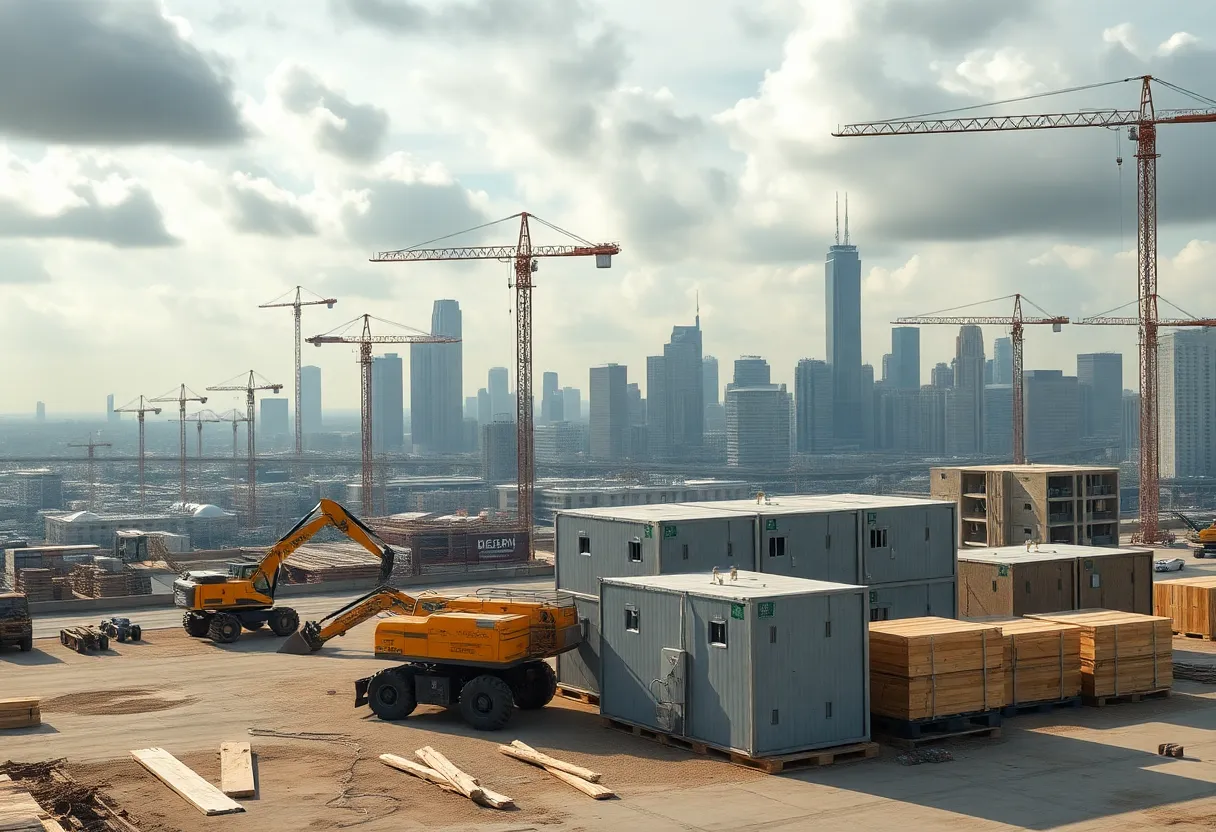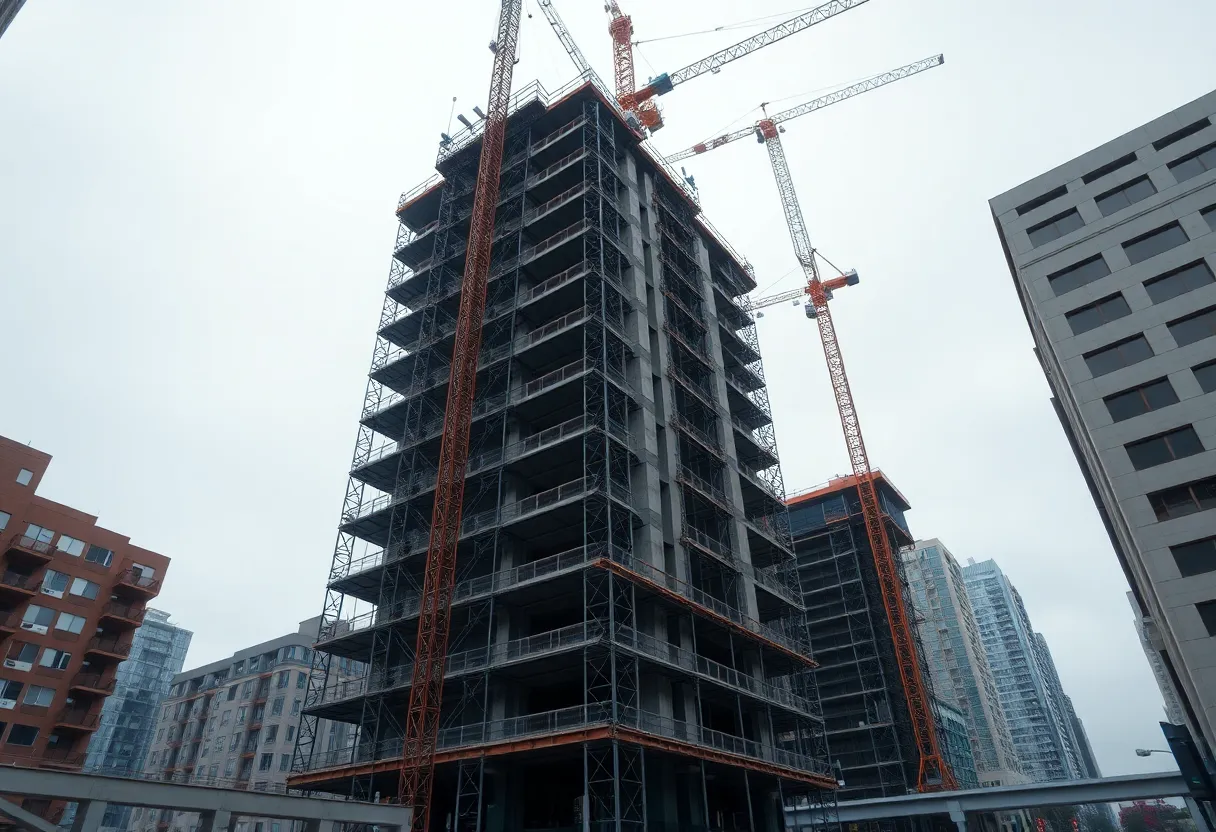United States, September 2, 2025
News Summary
The US construction market is valued at approximately USD 1.90 trillion and is forecast to reach about USD 2.92 trillion over the coming decade, driven by large-scale infrastructure investment, commercial development, and manufacturing expansion. Rapid adoption of digital and automated technologies — including AI, BIM, 3D printing, AR, telematics and IoT — is improving schedule reliability, safety and collaboration. Equipment trends favor telematics, machine controls and electrification, while modular and prefabrication methods expand. Persistent skilled labor shortages and commodity volatility remain risks, and sustainability, low-carbon materials and predictive maintenance are shaping future competitiveness.
Market snapshot: US construction market set to grow to nearly $3 trillion by 2034
The current year’s central figure places the United States construction market at approximately USD 1.90 trillion in 2024, with a forward trajectory aimed at around USD 2.92 trillion by 2034. This expansion corresponds to a compound annual growth rate of roughly 4.40% from 2025 through 2034. The numbers reflect the broad scope of construction activity, spanning buildings, bridges, roads and other infrastructure, and encompass planning, design, procurement and the physical building work itself.
Construction is defined here as the full process of assembling physical structures, involving professionals from multiple disciplines: architects, engineers, contractors, project managers and skilled tradespeople. The market’s momentum hinges largely on the nation’s ongoing push to upgrade aging facilities and expand critical networks, driven by the economy’s reliance on a robust infrastructural backbone.
Key drivers and current trends shaping the market
Growth drivers
The primary growth driver is rising infrastructural development across the country. Governments are prioritizing upgrades to roads, bridges, freight rail, ports, electrical grids and digital connectivity, creating sustained demand for new construction and modernization efforts. A parallel trend is the increasing development of manufacturing facilities for electronic products and components, supporting a broader demand environment for construction activity.
Technological and sustainability trends
Major market trends include rapid technological advancements and the increasing adoption of innovative technologies in construction. Technologies such as artificial intelligence (AI), building information modelling (BIM) software, 3D printing and augmented reality (AR) are being used to improve project efficiency, reduce errors and foster collaboration across teams.
The rise of smart buildings is another key demand driver. The integration of the Internet of Things (IoT) enables centralized control of systems like HVAC, lighting and security, while a growing focus on energy efficiency sustains interest in high-performance, sustainable design and operation.
Market structure and segments
In terms of construction type, Additions are expected to hold a major share of the market in the coming years. By end use, the commercial construction segment is anticipated to experience notable growth, underpinned by the expansion of private firms and retail and office development in developing states. Green building practices and energy-efficient design are increasingly shaping demand in commercial spaces.
Industry dynamics: competition, segments, and geography
Analyses of the market’s competitive landscape reveal a mix of large, diversified firms and specialized players. Leading firms highlighted in the assessment include Hensel Phelps Construction Company, a long-standing player with expertise across healthcare, government, education, hospitality, industrial and other sectors; Lennar Corporation, a major residential builder and real estate developer; and Kiewit Corporation, known for highways, bridges, airports and energy-related projects. Other notable participants include D.R. Horton, Tutor Perini, PCL Constructors, Kajima Corporation, Hochtief AG, PulteGroup and NVR, Inc. (Ryan Homes).
The market analysis also emphasizes a structured framework for understanding competitive dynamics, including a detailed look at Porter’s Five Forces and a SWOT perspective. This approach aids in evaluating supplier power, buyer power, threats of new entrants and substitutes, and the overall intensity of competition within the U.S. construction sector.
Context on market scope and structure
The broader report covers a spectrum of topics, from market size and growth projections to opportunities and risks, supplier and buyer dynamics, and regional insights. It dives into future market developments in the United States, including the trajectory of demolition and new constructions versus Additions, and tracks end-use sectors such as Commercial, Residential, Industrial, and Energy & Utilities. Regional analysis spans New England, the Mideast, Great Lakes, Plains, Southeast, Southwest, the Rocky Mountain region and the Far West.
Governments, policy, and the road ahead
Policy makers are prioritizing upgrades to decades-old infrastructure and expanding digital and physical networks. This public investment is expected to sustain construction activity and drive demand for materials, equipment and skilled labor, even as the market faces ongoing challenges such as skilled labor shortages and cyclical inputs costs. Energy considerations, green building mandates and the push toward electrification of equipment further shape industry demand and technology adoption in construction operations.
Technology, safety and the workforce in focus
Beyond structural work, the sector is evolving through the adoption of predictive maintenance, digital twin concepts, and modular or prefabricated methods that accelerate timelines and reduce waste. Robotics and automation are increasingly present on sites, with devices such as robotic ties, autonomous layout tools and geofenced equipment entering the mix. Industry observers note that the convergence of environmental sustainability with software-powered workflows tends to bundle cost reduction with productivity gains, a pattern likely to persist through 2034.
What this means for stakeholders
For builders, developers and public agencies, the growth outlook reinforces the importance of adopting advanced design and construction methods, investing in energy-efficient and resilient building practices, and embracing digital tools that improve coordination, scheduling and safety. For suppliers and manufacturers of equipment and technology solutions, the message is clear: demand will be steadier where infrastructure investment remains a priority and where projects leverage BIM, AI and automation to optimize outcomes.
FAQ
What is the approximate size of the US construction market in 2024?
The market is estimated at about USD 1.90 trillion in 2024.
What is the projected market size by 2034?
Forecasts point to around USD 2.92 trillion by 2034.
What is the expected growth rate from 2025 to 2034?
The market is expected to grow at a CAGR of 4.40% over this period.
Which construction segments are most important for growth?
Growth is driven by Additions as a construction type and Commercial construction as an end-use segment, with rising private investment supporting demand in developing states.
What key technologies are influencing construction?
Technologies include AI, BIM, 3D printing and AR, along with IoT-enabled smart buildings and digital design tools to improve efficiency and collaboration.
Who are the major players mentioned?
Prominent firms include Hensel Phelps Construction Company, Lennar Corporation and Kiewit Corporation, among others.
What broader themes connect construction trends?
Environmental sustainability and software adoption are overarching themes that tend to drive cost savings and productivity enhancements across modern construction projects.
Key features at a glance
| Feature | Description | Data Point |
|---|---|---|
| Market size (2024) | Total value of the US construction market in 2024 | USD 1.90 trillion |
| Forecast size (2034) | Projected market size by 2034 | USD 2.92 trillion |
| Forecasted CAGR | Growth rate 2025–2034 | 4.40% |
| Major growth drivers | Infrastructure upgrades, manufacturing facility expansion, smart buildings | Infrastructural development, smart buildings |
| Key construction types | Share of market by construction type | Additions expected to hold a major share |
| Leading end-use | End-use segments driving demand | Commercial construction expected to grow significantly |
Deeper Dive: News & Info About This Topic
Additional Resources
- ResearchAndMarkets / Business Wire: United States Construction Industry Report 2025–2034
- Wikipedia: Construction industry in the United States
- GlobeNewswire: North America Construction Equipment Industry Report 2025
- Google Search: North America construction equipment market 2025
- JLL: 2025 Construction Perspective — US midyear update
- Google Scholar: JLL 2025 construction perspective
- KVUE: Austin tops list — apartments built in United States (BoomTown 2040)
- Encyclopedia Britannica: Search — Austin apartments BoomTown 2040
- WSMV: Nashville among top US metros — new construction homes report
- Google News: Nashville new construction homes 2025





